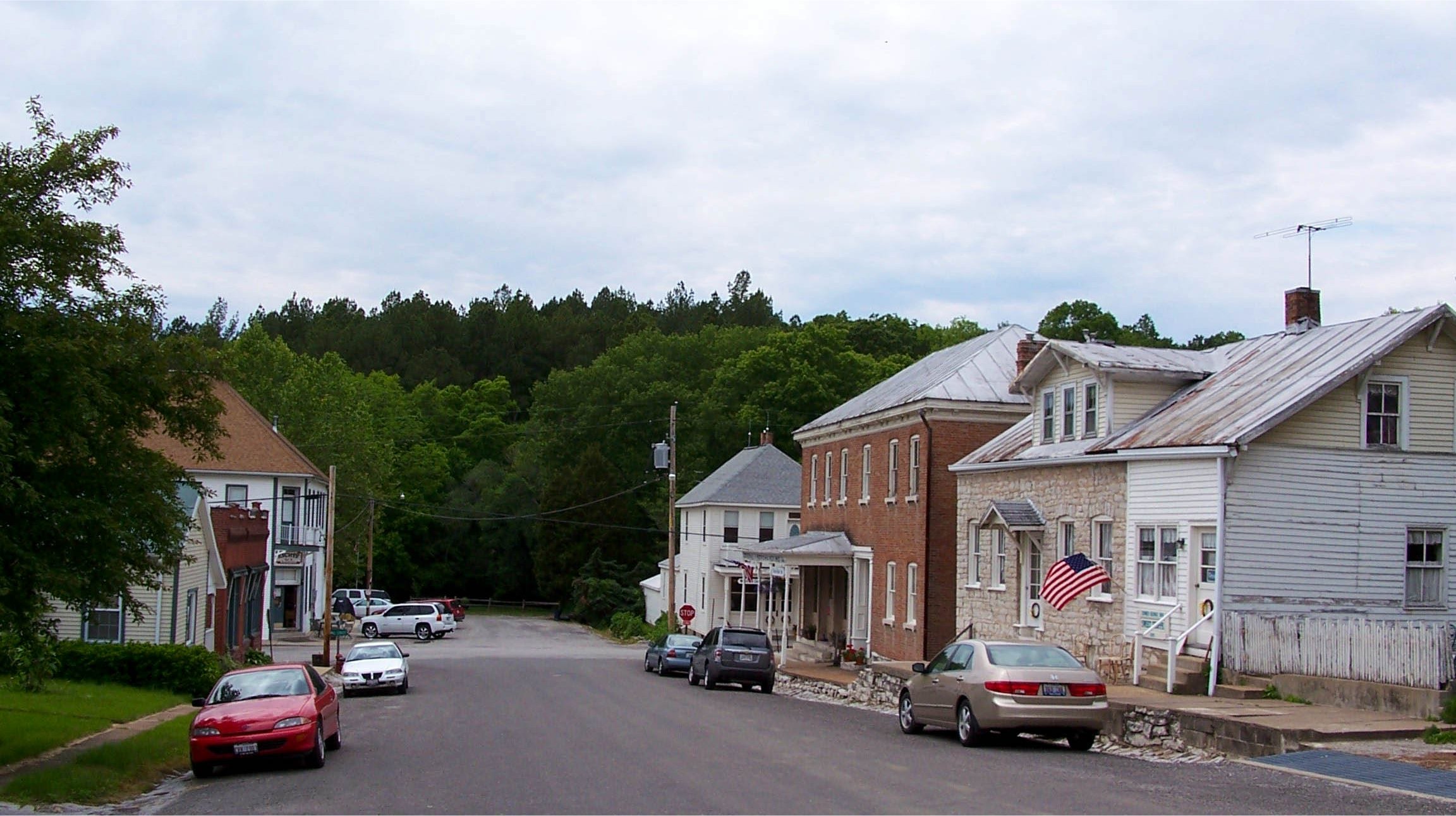124 E. 1st Street
Cahokia, Illinois
618-332-1782
The Jarrot Mansion is a two-story brick house that dates to the early 19th century and is considered to be the oldest brick building in Illinois. The home was built by Nicholas Jarrot who was born in southeastern France in 1764 and immigrated to America in 1791, presumably to escape the French Revolution. After a brief stay in Baltimore Jarrot headed west to New Orleans and up the Mississippi River arriving in Cahokia in the mid 1790's. Jarrot was a shrewd land speculator and his real estate holdings eventually reached 25,000 acres. A leading citizen of Cahokia, Jarrot worked as a lawyer, served as a judge, and as major of the town militia. He managed a general store in Cahokia and built and operated several mills. Jarrot died in 1820 after catching a fever while tending one of his mills.
Brickwork of on the mansion began in 1807 and was finished by 1810. The Jarrot Mansion is an early example of the Federal style of architecture in the Middle Mississippi Valley. At the time this style was rare in an area Americans considered a wilderness and in an area dominated by the French Creole type of architecture. It is thought that the immigrant Jarrot may have been seeking to not only demonstrate his prosperity but also his identity as an American citizen.
Because the Jarrot Mansion has had only five owners, the building remains remarkably intact. The interior is well preserved and retains almost all of its entire original features, including plaster, pine flooring, woodwork, and even some panes of glass. The dominant room of the first floor is a large central room that was used as a reception area, as a dining room, and as a breezeway. This central room was flanked by two bedrooms, a room Major Jarrot used as an office, and what was probably a multipurpose room. A large ballroom was the focus of the second floor which also held two small guest bedrooms and a drawing room where Jarrot and his friends could be found playing games of chance. Fireplaces provided both light and heat during the winter, while cooking was done in a basement fireplace or in later years a summer kitchen located in the back yard. The doors, windows, and chimneys aren’t evenly spaced because at the time the mansion was built capturing the best light, ventilation, and heat was more important than symmetry.
The Jarrot Mansion was purchased by the Village of Cahokia in 1976 and the Illinois Historic Preservation Agency acquired the property in 1980. Professional restoration of the mansion was begun in 1999 and the mansion was designated a National Historic Landmark in 2001. The Jarrot Mansion is part of the Colonial Cahokia State Historic Sites complex that also includes the Cahokia Courthouse, the Martin-Boismenue House, and a Visitors Center. Information can be obtained at the Visitors Center about the Holy Family Log Church and other area attractions.
The Lewis and Clark Connection
“I arrived at Cahokia on the 7th and immediately took occasion to make myself acquainted with Mr. John Hay (the Post Master of this place) and a Mr. Jarrot, … these gentlemen readily consented to accompany me, and on the next day (the 8th) I set out in company with them to visit Colo. Lasuse (Charles Deheau de Lassuse (the Spanish Lt. Governor of Upper Louisiana)… ,” Meriwether Lewis to President Thomas Jefferson, Cahokia, December 19, 1803.
By the time Lewis and Clark arrived in Cahokia in 1803, Nicholas Jarrot had had considerable success as a land speculator and owned large tracts of land in the region. After the Spanish refused to Lewis’ request to base the Expedition in territory west of the Mississippi, Jarrot allowed Lewis and Clark to build their winter headquarters on property he owned along the River Dubois, near present day Wood River. During this time, Jarrot likely lived in a typical post-on-sill house located somewhere near the mansion site and when Lewis stayed overnight in Cahokia he probably was a guest at the Jarrot home, as Jarrot was the wealthiest man in the Cahokia.
Visit our special Lewis and Clark Section to learn more about the Corps of Discovery’s experience during their stay in the Middle Mississippi River Valley. greatriverroad.com’s special coverage includes information on all of the region’s sites and events as well as supplemental articles relating to the expedition’s experience during the winter of 1803-04.
Visiting the Jarrot Mansion
The Jarrot Mansion holds occasional events where the public is invited to view the progress on the restoration of the mansion and to interact with costumed interpreters to learn about 19th century colonial America. If you wish to view the Jarrot Mansion at other times it is necessary to make an appointment by calling 618-332-1782.
There is no charge to visit the Jarrot Mansion.
Explore the community of Cahokia, Illinois area.
















